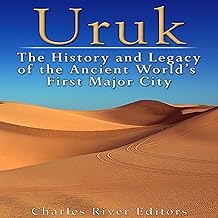Summary of "صعود سومر .. حضارة بلاد الرافدين .. الجزء الأول .. سلسلة حضارات عظيمة"
Summary of “صعود سومر .. حضارة بلاد الرافدين .. الجزء الأول .. سلسلة حضارات عظيمة”
This video explores the rise of the ancient Sumerian civilization in Mesopotamia, highlighting its origins, social structure, cultural achievements, and political developments. It places Sumer within the broader context of early human civilization and traces its influence across the ancient Near East.
Main Ideas and Concepts
Context of Ancient Civilizations
- Ancient civilizations like the Roman Empire and Han Dynasty are well-known but much younger than Sumer.
- Sumer emerged around 6,000 years ago, predating many classical empires.
- It was one of the first urban civilizations, originating in the region between the Tigris and Euphrates rivers (Mesopotamia).
Geographical and Environmental Setting
- Mesopotamia, meaning “land between two rivers,” was fertile but prone to devastating floods.
- The Euphrates River was called “Burnan” by the Sumerians, meaning “great flood,” which shaped their religious beliefs.
- The unpredictable floods influenced the Sumerians’ view of their gods as capricious and powerful.
Transition from Hunter-Gatherers to Agriculture
- After the last Ice Age (~10,000 years ago), humans in Mesopotamia shifted from hunting to settled agriculture and animal husbandry.
- This agricultural surplus enabled population growth and the development of complex societies.
Early Settlements and Social Organization
- The Ubaid period (6500–3800 BC) saw the rise of village communities like Eridu.
- Surplus food allowed for specialization of labor (merchants, craftsmen, metalworkers).
- The emergence of taxation and food redistribution led to the formation of early governments.
Urban Development and Governance
- The first true cities appeared, with Uruk being the most prominent.
- Cities had hierarchical social systems with ruling priests at the top, not kings initially.
- Temples played central roles socially, politically, and economically.
- The first writing system (proto-cuneiform) was developed to record taxes and surplus distribution.
Expansion and Influence of Uruk Civilization
- From 3500 BC, Uruk’s influence spread across the Near East, including Syria and Iran.
- Uruk’s colonization and trade efforts sought resources scarce in Mesopotamia.
- There is unconfirmed evidence of Uruk’s cultural influence reaching Egypt.
Political Fragmentation and City-States
- After Uruk’s decline, multiple Sumerian city-states flourished (Lagash, Umma, Larsa, Ur).
- These cities had complex political and religious systems, often centered around patron gods.
- Frequent border disputes occurred, such as between Lagash and Umma over fertile lands.
Role of Religion and Temples
- Temples were multifunctional institutions: religious centers, granaries, archives, and workshops.
- Kings often derived authority through association with gods.
- Military victories and political power were attributed to divine favor.
Towards Centralized Rule and Empire
- By the late third millennium BC, ideas of regional unification emerged, possibly inspired by Egyptian unification.
- Lugalzagesi of Umma temporarily unified several Sumerian cities by conquest around 2350 BC.
- He established a dynasty centered in Ur but was soon succeeded by a northern Sumerian ruler who founded the first true empire in history (to be covered in subsequent parts).
Methodology / Key Points
- Origins and Environment:
- Recognize Mesopotamia’s geography and flood challenges.
-
Understand the religious implications of natural phenomena on Sumerian gods.
-
Societal Development:
- Shift from hunting to agriculture enabled population growth.
- Surplus food led to labor specialization and social stratification.
-
Development of taxation and food redistribution as governance foundations.
-
Urbanization:
- Identify Uruk as the first major city with hierarchical governance led by priests.
- Temples as centers of power and administration.
-
Introduction of proto-writing for economic management.
-
Expansion and Influence:
- Uruk’s cultural and economic influence spread widely.
-
Colonization and resource acquisition outside Mesopotamia.
-
Political Landscape:
- City-states with patron gods and frequent conflicts.
- Temples and kings shared political and religious authority.
-
Military campaigns attributed to divine support.
-
Toward Unification:
- Emergence of centralized rule inspired by neighboring civilizations.
- Lugalzagesi’s conquests as a precursor to empire formation.
Speakers / Sources Featured
- The video features a narrator who provides a historical overview and analysis of Sumerian civilization.
- References to Sumerian myths are included to illustrate cultural and religious beliefs.
Category
Educational
Share this summary
Featured Products



